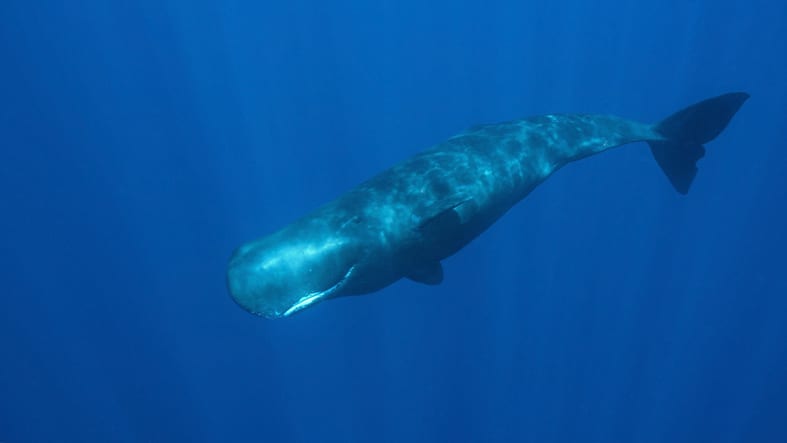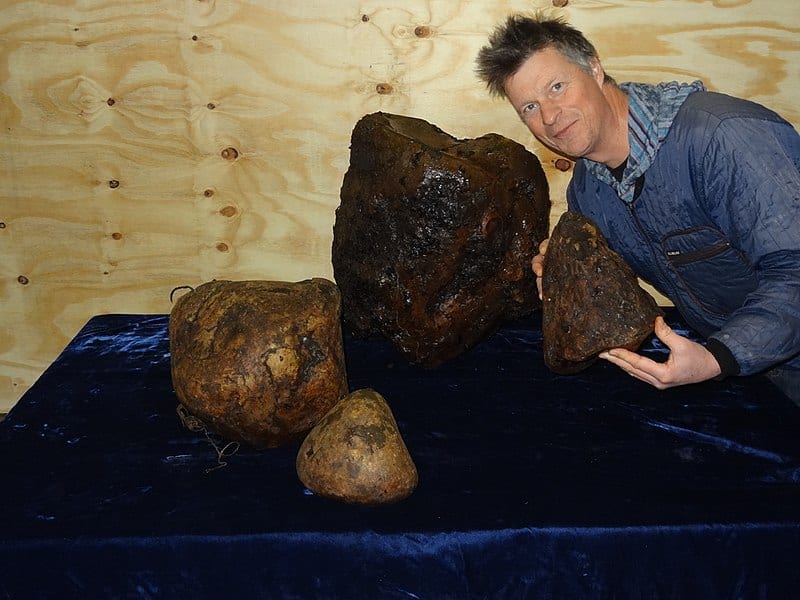Trending Now
Y’all, I had no idea that one of the best and move coveted ingredients for high-end perfume came from a whale’s intestines.
For real.
Whale vomit (or perhaps something like a whale gallstone), also called ambergris, is exactly that – and a raw, waxy glob of it could be worth up to $20,000.

Image Credit: Peter Kaminski
Ambergris forms in the intestines of a sperm whale, but as it cannot be digested, the eventually vomit it up. Occasionally scientists have found hard or rough objects, like a squid beak, in the hardened clumps, leading them to posit that the ambergris could have a function like protecting the whale’s digestive tract from sharp objects.
When the vomit is fresh, it’s soft and has a smell akin to cow dung – which I doubt many people would dab on their neck and wrists. It takes about a decade of floating in the ocean for the stuff to harden into a smooth, wavy, roundish glob that is desired by perfume makers the world over.
The scent is now earthy, musky, sweet, and also, the ambergris causes a scent to better “stick” instead of evaporating quickly. Proponents claim it’s an aphrodisiac, can be used as a homeopathic remedy, and is even used as a flavoring in food.

Image Credit: iStock
It’s also a rare find.
Only sperm whales produce ambergris, and there’s no way to track where it can be found, since whales don’t keep records of their vomit. Every few years, someone finds some on a beach – though all too often, someone thinks they’ve found some, only to be told they’ve just got some wax or a petrified sea creature, instead.
If you want to go out hunting, you’re looking for a hard, waxy lump that’s white, gray, black, or some mixture of the three.

Image Credit: Ecomare
It will sport an unusual but pleasant smell, but aside from those vague features, there’s not much else to go on – tough these two simple tests should at least help you rule out some imposters.
- Heat a needle over flame for 15 seconds, then insert it about an eighth of an inch into the substance. If it melts around the needle into black, bubbling liquid, strings away on your finger like tar, and if the needle lets off a white smoke when reheated, you might have ambergris.
- Does a sample of the substance dissolve in hot methyl alcohol and crystallize when the alcohol cools? Jackpot!
Chemists have, of course, been able to replicate some traits of ambergris in a lab, making it less valuable than it once was – but there are plenty of people willing to pay for the real deal. Experts quote the going rate at around $10-$20 per gram.
There are some legal issues that can be slippery, depending on where you’ve found your pricey puke – in some countries, including the U.S., endangered species acts make it illegal to buy or sell ambergris.
Check your laws and don’t get arrested, but also don’t toss that weird looking lump you find at the beach next time.






